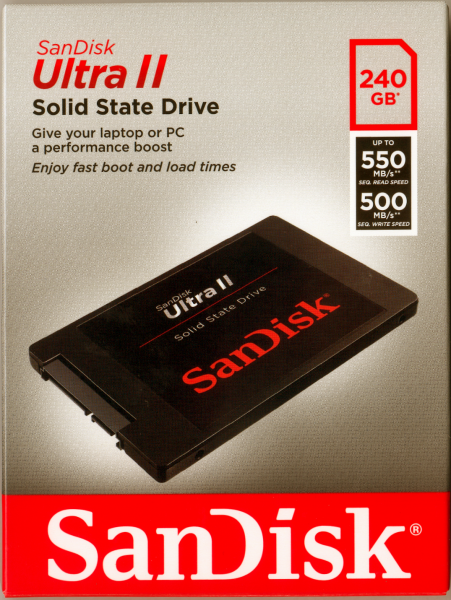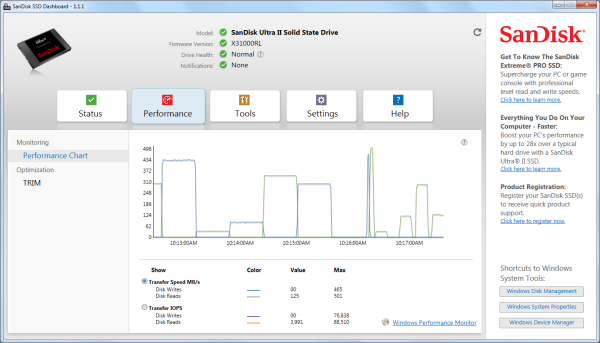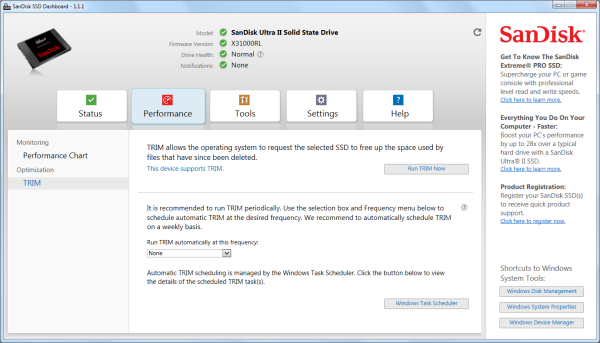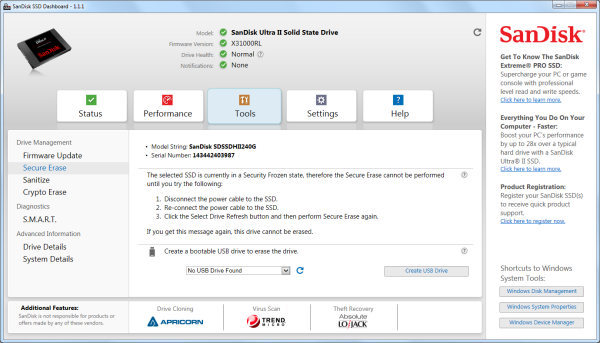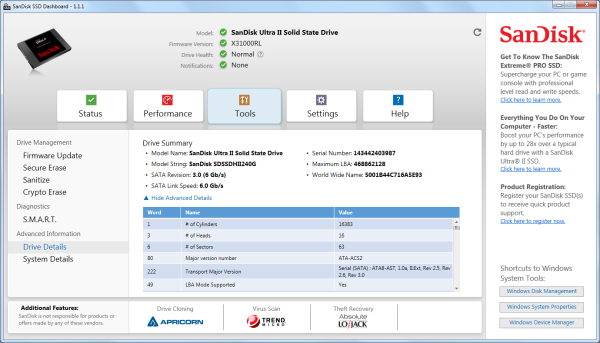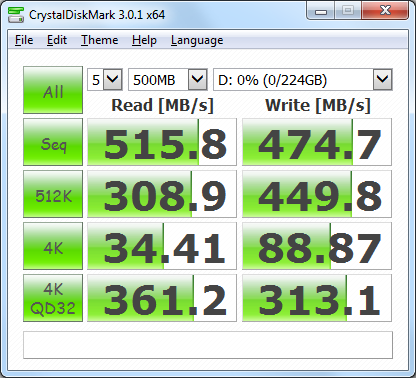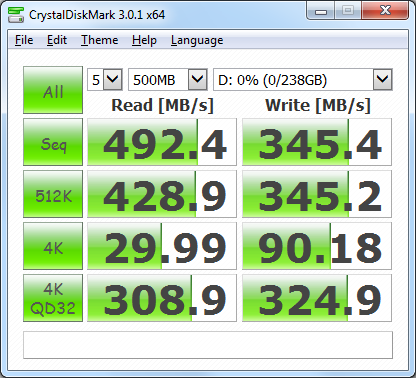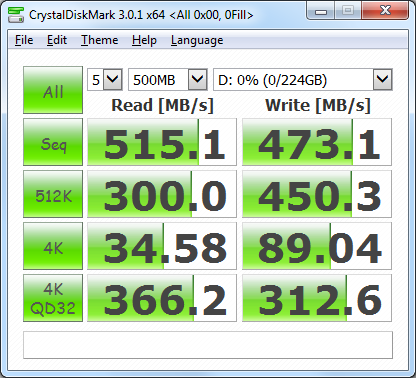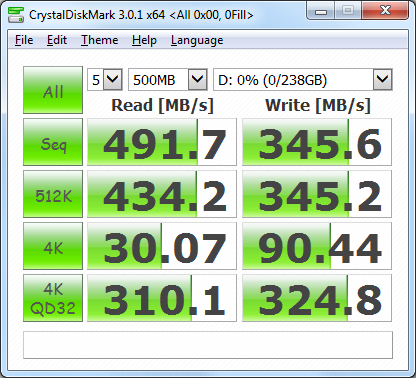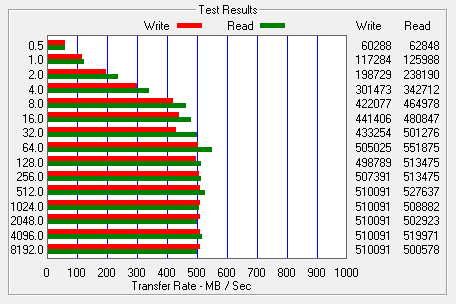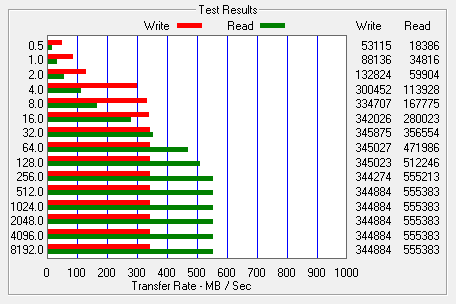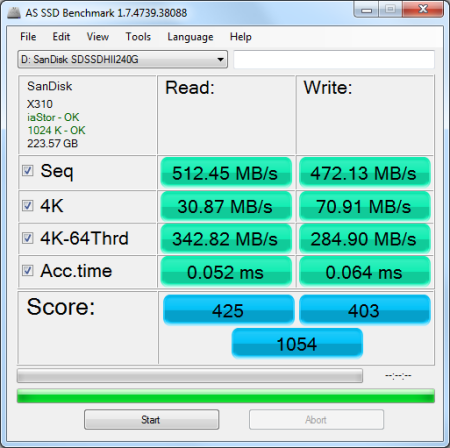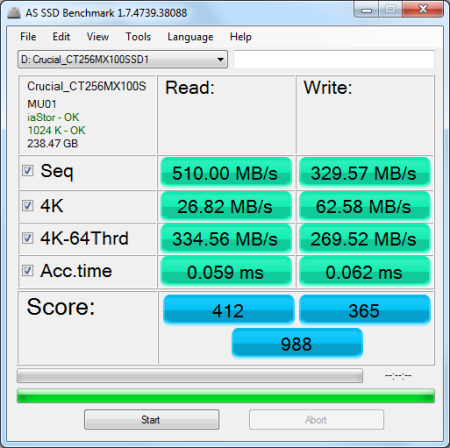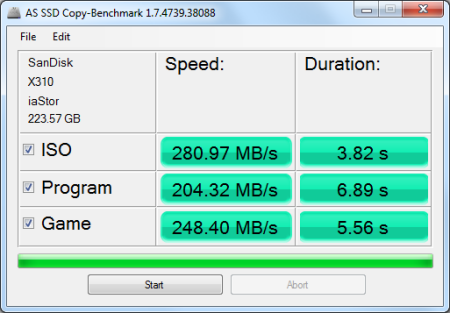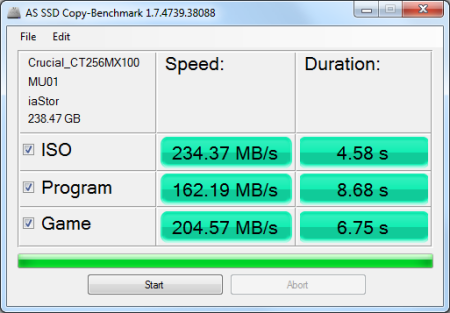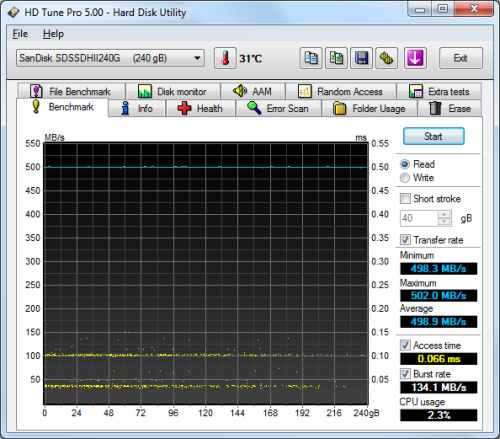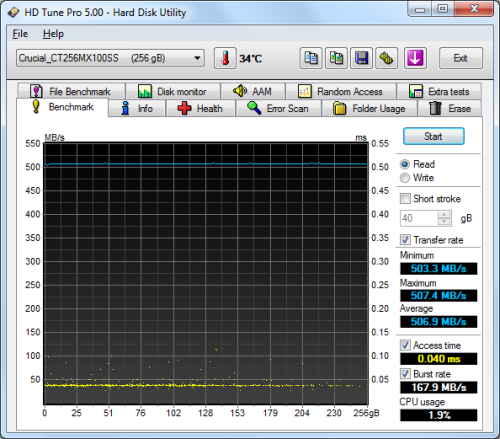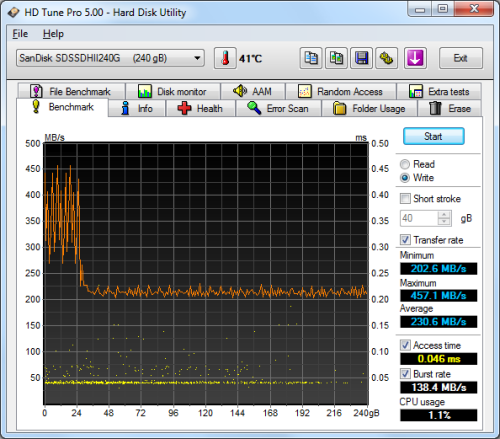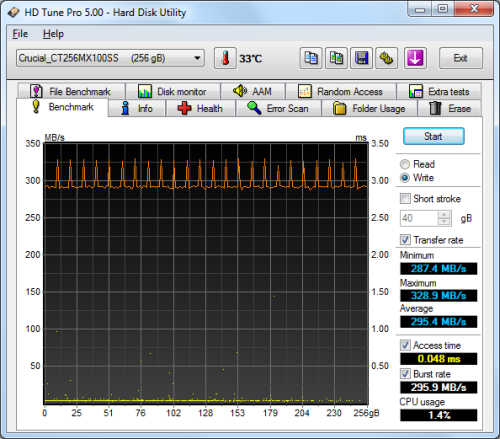

Model: SanDisk Ultra II 240GB Solid State Drive
Manufacturer: SanDisk
Provided By: Reader Donations
SanDisk has been a leader in the storage industry for more than 20 years. Founded in 1988 by Dr. Eli Harari, the company has grown from a three-person Silicon Valley startup to the world's largest provider of flash memory storage solutions. The company offers a wide range of products including memory cards, USB flash drives, SSDs and its popular line of Sansa music and video players.
The latest addition to SanDisk's line of consumer-oriented solid state drives is the Ultra II. This easy, affordable upgrade solution is available in capacities ranging from 120GB up to a massive 960GB, and, depending on the capacity, is powered by one of two controllers from Marvell. Where the 120GB and 240GB versions of the drive are equipped with the 4-channel 88SS9190, the 480GB and 960GB versions get the 8-channel 88SS9189. The Ultra II is also the first SSD from SanDisk to use TLC NAND flash. While this high-density NAND is more affordable than the MLC Toggle NAND flash found in SanDisk's Extreme Pro SSD, there is a bit of a trade off in regards to endurance (program/erase cycles) and performance.
To overcome the challenges associated with TLC NAND flash, the Ultra II utilizes a tiered caching system which combines a sizeable DRAM cache with SanDisk's nCache 2.0 technology. This new version of nCache improves write performance and endurance by minimizing write amplification on the TLC NAND flash.
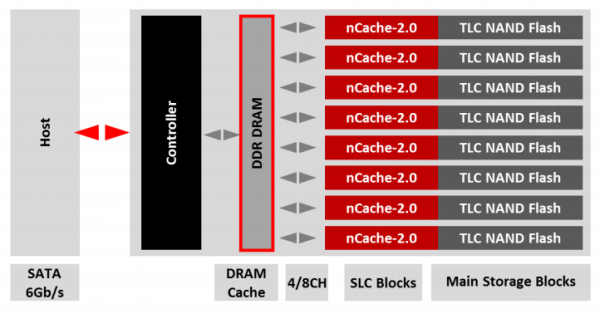
With nCache 2.0, data is first written to the SLC blocks. When the SLC blocks are partially full, data is copied from there to TLC blocks. This copy operation is done using the NAND's On Chip Copy feature, which is capable of copying data inside the NAND without needing to use the controller or the DDR DRAM cache. During this process, On Chip Copy takes three SLC blocks and folds them into a single SLC block. These blocks are written sequentially, resulting in optimized write amplification (< 1).

The Ultra II also incorporates what SanDisk calls Multi-Page Recovery (M.P.R). Intended as a last line of data protection, Multi-Page Recovery uses page-level striping to recover errors that could not be corrected by other traditional means.
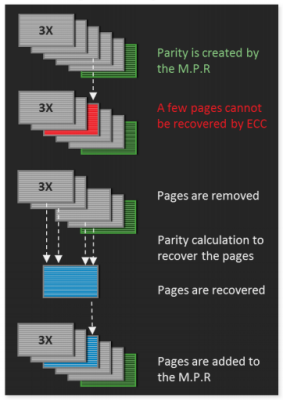
For this review, we purchased the 240GB version of the Ultra II. This drive is capable of delivering up to 550 MB/s sequential read and 500 MB/s sequential write speeds as well as up to 91,000 random read and 83,000 random write IOPS.
| SanDisk Ultra II 240GB Solid State Drive | |||||||||||||||||||||||||||||||||||||||||||||||||
General Specifications
Performance
Reliability
Power Consumption
Environmental
Dimensions and Weight
Other Features
|
Needless to say, this is only a taste of what the Ultra II has to offer. To give you an idea of what to expect, we'll take a closer look at SanDisk's new SSD and then see how well it performs. Does the Ultra II have what it takes? Is it the best bang for your buck? Keep reading as we find out.
The Ultra II comes in a small, red and gray box. While there aren't a lot of details on the back, the front of the box advertises the drive's key features including its 240GB capacity and maximum read and write speeds. Inside, you'll find the SSD, a mounting spacer for use with traditional 9.5mm drive bays, and a fold out guide that contains warranty information as well as installation instructions for both desktop and notebook computers.
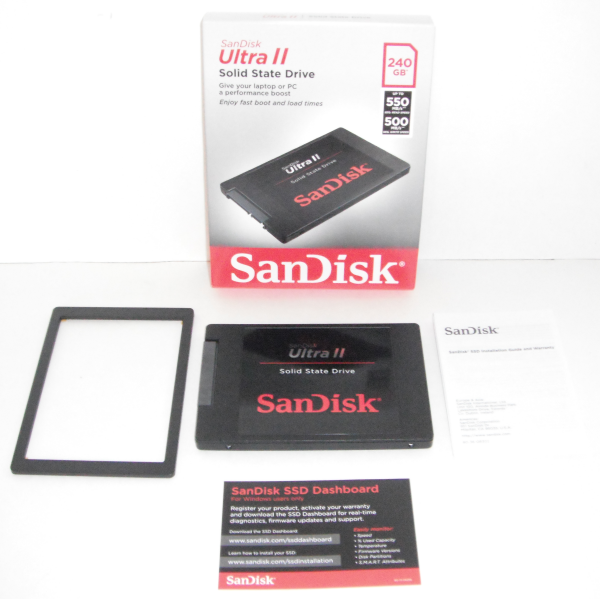
Physical Features:
The Ultra II looks very similar to SanDisk's other 2.5-inch SSDs. The top of the outer casing is made out of black plastic with a large, black and red sticker showing that the SSD is part of the company's Ultra II series. The bottom of the casing is made out of metal and is painted black to match the top. The large sticker on the bottom covers the screws holding the drive together and shows information like the part number, capacity and serial number.


Upon opening the case, I was a bit surprised to see how small the Ultra II's PCB was. Instead of using a regular size PCB, SanDisk has placed a half-slim SATA SSD inside of a 2.5" case.

The 240GB version of the Ultra II uses Marvell's 88SS9190 controller. There is very little information available regarding this controller but from what we can gather, it is very similar to the 88SS9189 controller found in Crucial's M550 and MX100 SSDs. The biggest difference is that instead of eight NAND flash channels, the 88SS9190 supports only four.
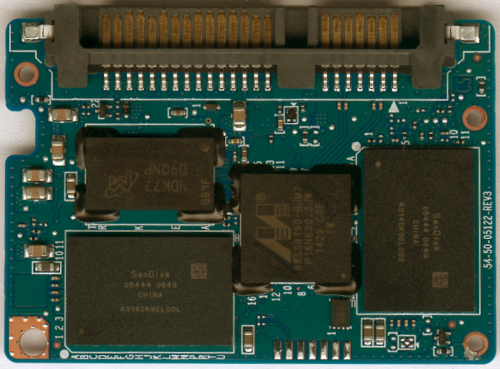
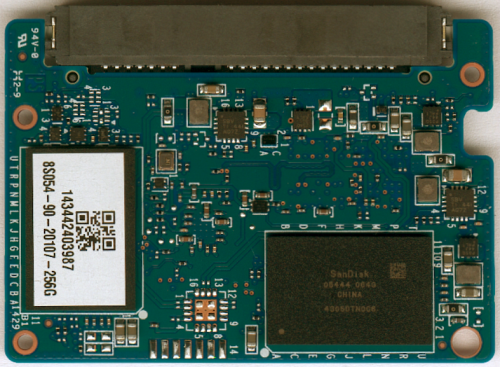
For the 240GB version of the Ultra II, SanDisk opted to use their own 1Ynm X3 ABL Toggle NAND flash. Looking at the picture above, you can see that there are two 64GB NAND flash packages on either side of the PCB. The drive also has a 256MB Micron DDR3 SDRAM memory chip that is used for caching.
The Ultra II is fully supported by SanDisk's new SSD Dashboard software. This easy to use, Windows-based utility gives users the ability to manage and monitor their drives. From the main screen, you can check the status of your SSD and view information like the firmware version, capacity, temperature and the life remaining.
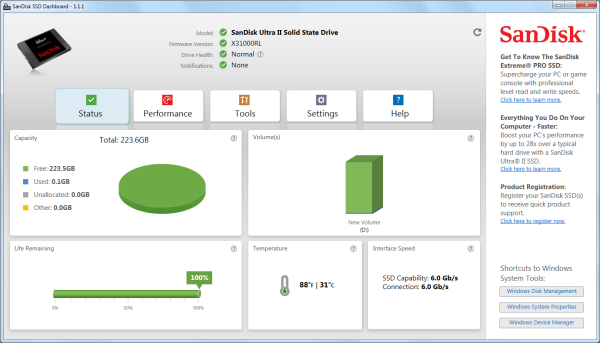
The SSD Dashboard also gives users the ability to monitor the performance of their drives and optimize the performance by manually running TRIM or scheduling it to run periodically.
The Tools section offers a number of options, including the ability to do a firmware update, perform a secure erase and sanitize your drive by erasing of the data on it. These tasks can be performed from within the SSD Dashboard. Otherwise you can create a bootable USB drive, CD or DVD.
The SSD Dashboard also has the ability to run S.M.A.R.T. diagnostic tests and provide details about your drives and system.
From within the Settings tab, you can update SSD Dashboard and configure the software so that it starts up with Windows. You can also turn off write-cache buffer flushing and select from one of 17 languages.
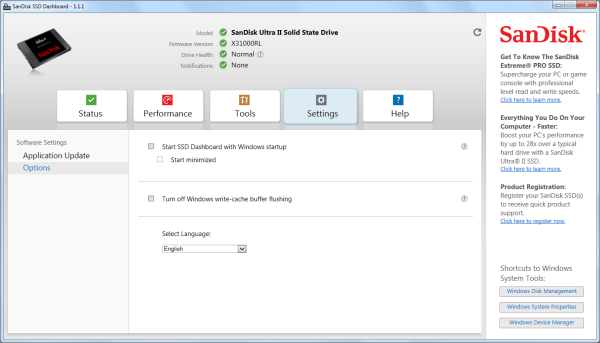
The test system used in this review was an HP 8200 Elite. The computer came equipped with an Intel Core i5-2400 CPU, 4GB of DDR3 1333MHz memory, Seagate Barracuda 7200.12 ST3250312AS 250GB SATA 6 Gb/s hard drive, NVIDIA Quadro FX580 512MB PCIe graphics card and an Intel 82579-LM gigabit network card. For the operating system, I installed a fresh copy of Windows 7 Enterprise.
To test the performance of SanDisk's 256GB Ultra II SSD, I ran a series of benchmarks using CrystalDiskMark 3.0.1, HD Tach RW 3.0.4.0, ATTO Disk Benchmark 2.46, AS SSD, HD Tune PRO 4.61, Anvil's Storage Utilities and Iometer. For comparison, I've also included test results from the Crucial MX100, SanDisk Extreme Pro, Samsung SSD 850 PRO, Plextor PX-256M6S, Toshiba Q Series PRO, Plextor PX-256M6M, Samsung SSD 840 EVO mSATA, OCZ Vector 150, OCZ Vertex 450, Silicon Power Slim S55, Samsung SSD 840 EVO, Seagate 600 SSD, SanDisk Extreme II, Plextor PX-256M5M, OCZ Vector, Plextor PX-256M5PRO Xtreme, Samsung SSD 840 PRO and Samsung SSD 840.
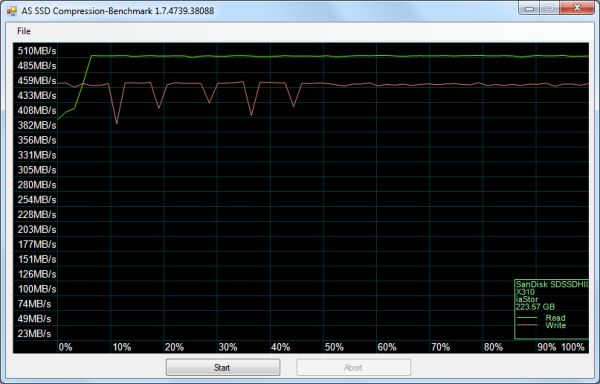
As I mentioned earlier, the 240GB version of the Ultra II is based on Marvel's 88SS9190 controller chip. Looking at the screenshot above, you can see that it performs equally well with both incompressible (0%) and compressible (100%) data.
CrystalDiskMark 3.0.1:
First, I ran a few quick tests using CrystalDiskMark. This benchmark tool measures the performance of a storage device by testing its sequential read and write speeds as well as its random read and write speeds using blocks 512K and 4K in size.
According to SanDisk, the 240GB Ultra II is capable of reading at 550 MB/s and writing at 500 MB/s when connected to a SATA 6 Gb/s port. While the drive performed well, it came up a bit short of these numbers in CrystalDiskMark's sequential read and write speed tests.
The Ultra II performed equally well when using highly compressible 0x00 (0 Fill) data. This time around, the drive was able to read at 515.1 MB/s and write at 473.1 MB/s.
HD Tach RW 3.0.4.0:
Next, I used HD Tach to test the Ultra II's read, write and burst speeds as well as its seek times and CPU usage.

Looking at the screenshot above, you can see that the Ultra II had average read and write speeds of 437.0 MB/s and 237.6 MB/s respectively, as well as a burst speed of 365.9 MB/s. The screenshot also shows the transition from SLC to TLC NAND. The Ultra II starts writing at about 400 MB/s and then drops to about 235 MB/s when On Chip Copy kicks in and begins to copy data from SLC to TLC blocks.
ATTO Disk Benchmark 2.46:
I also used ATTO Disk Benchmark to test the Ultra II's sequential read and write speeds. The tests are run using blocks ranging in size from 0.5KB to 8192KB and the total length set to 256MB.
When tested with ATTO, the Ultra II's read speeds topped out at about 551 MB/s and its write speeds at 510 MB/s.
AS SSD:
AS SSD is a relatively new benchmark designed specifically for solid state drives. The application contains five synthetic tests used to determine the sequential and random read and write performance of a drive.
AS SSD also includes a copy benchmark. This test copies an ISO (two large files), program (many small files) and game (small and large files), returning the speed and duration of each.
HD Tune Pro 4.61:
Next, I ran a series of tests using HD Tune Pro. This hard disk utility measures a drive's performance by testing its sequential read and write speeds as well as its access time, burst rate and CPU usage. For this review, I'm also going to use it to benchmark the Ultra II's random read and write speeds, random access times and the number of operations per second.
The Ultra II performed relatively well when benchmarked with HD Tune. The drive had average read and write speeds of 498.9 MB/s and 230.6 MB/s, respectively, and a burst rate of 134.1 MB/s when reading.
 SanDisk Ultra II 240GB - HD Tune Random Access Read |
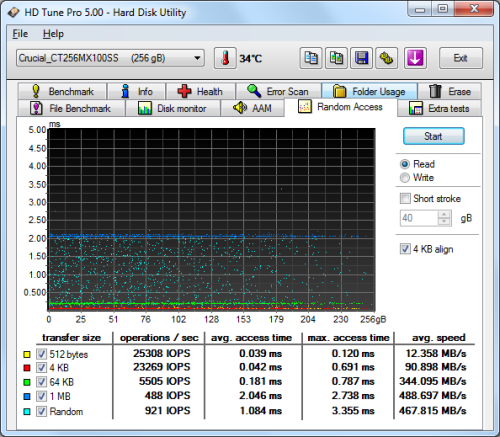 Crucial MX100 256GB - HD Tune Random Access Read |
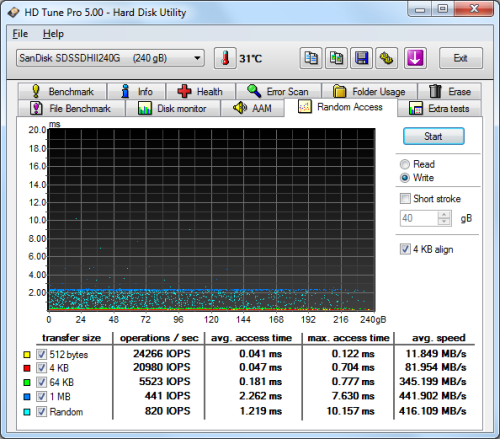 SanDisk Ultra II 240GB - HD Tune Random Access Write |
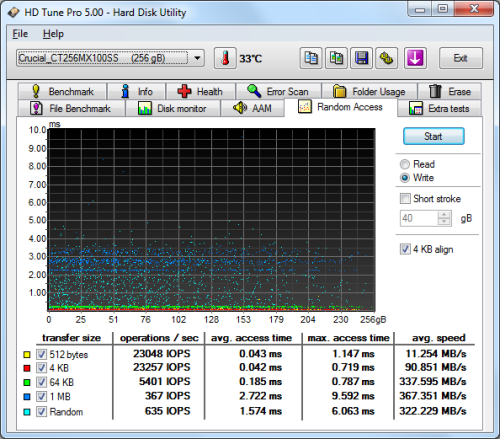 Crucial MX100 256GB - HD Tune Random Access Write |
The Ultra II didn't disappoint when doing random reads and writes. When writing 4KB blocks, the drive reached 20,257 IOPS and had an average speed of 81.954 MB/s. The Ultra II was even faster when reading, reaching 24,735 IOPS with an average speed of 96.622 MB/s.
Anvil's Storage Utilities:
Anvil's Storage Utilities is another new benchmark designed with SSDs in mind. The standard storage benchmark measures a drive's performance by testing its transfer speeds, access times and IOPS.

Iometer:
Lastly, I ran a series of tests using Iometer. This tool can be configured to benchmark a number of things. In this case, I used it to measure the Ultra II's read and write speeds and the number of operations per second. The tests were run using random bytes and a queue depth of 3.
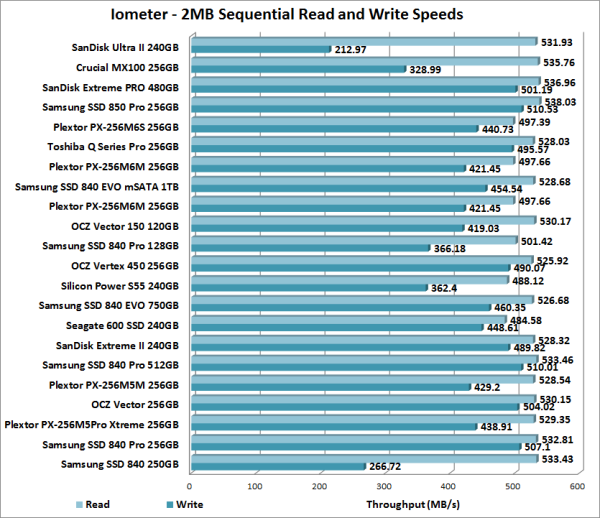
The Ultra II's performance was hit and miss when tested with Iometer. While the drive was able to read at a respectable 531.93 MB/s, its seqential write speed averaged out at only 212.97 MB/s.
From what I can gather, the Ultra II's lackluster write performance is due to the 8GB test file we're using. With a test file this size, the SLC portion of the drive quickly fills and nCache transitions over to the TLC NAND. At this point, the writing speed drops to what you see above. To test this theory, I reran the benchmark using a 4GB test file. The Ultra II performed better this time around. It started writing at about 500 MB/s but, after a minute or so, the SLC portion began to fill up and the average writing speed dropped to about 335 MB/s.

The Ultra II's random read and write performance was a mixed mag. While the drive was able to read at a respectable 148.04 MB/s, its random write speed topped out at only 180.54 MB/s. The Ultra II's random write speed was a little better when tested using a smaller 4GB file. However, with a random write speed of 204 MB/s, it was still slower than many of the other drives.
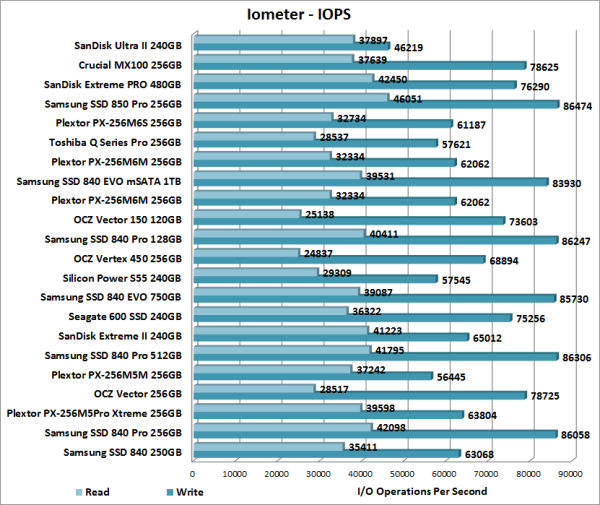
According to SanDisk, the 240GB Ultra II is capable of 91,000 IOPS when reading and 83,000 IOPS when writing 4K blocks. In our tests, the drive reached 37,897 random read IOPS and 46,219 random write IOPS. Increasing the queue depth had little impact on the Ultra II's random write performance. However, with the queue depth set to 32, the drive was able to reach 84,191 random read IOPS.
TRIM Performance:
While SSDs offer many benefits, there are some downsides to using flash memory. One of the biggest issues people run into is performance degradation. Over time, an SSD will run out of fresh blocks and will have to write over data the file system has marked as deleted. This procedure is very complicated and can slow an SSD's write speeds considerably.
To address this problem, most manufacturers have added TRIM support to their SSDs. The TRIM command allows an operating system, such as Windows 7, to tell an SSD which data blocks are no longer in use. Using this information, the drive pro-actively erases these blocks and adds them to the free block pool.
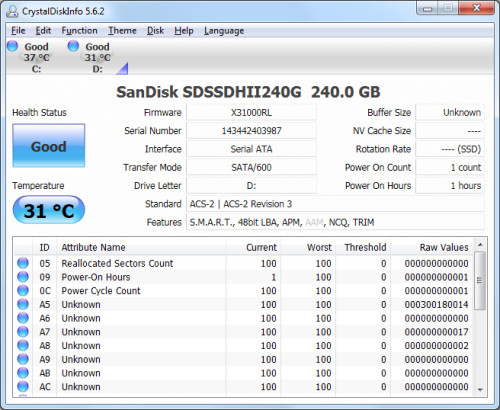
To test the Ultra II's TRIM and garbage collection functions, I first put the drive in a "dirty" state. I used Iometer to fill the entire drive and then ran a random write test for 30 minutes. Looking at the screenshot below, you can see that the Ultra II's average read and write speeds dropped to 359.7 MB/s and 25.0 MB/s, respectively.
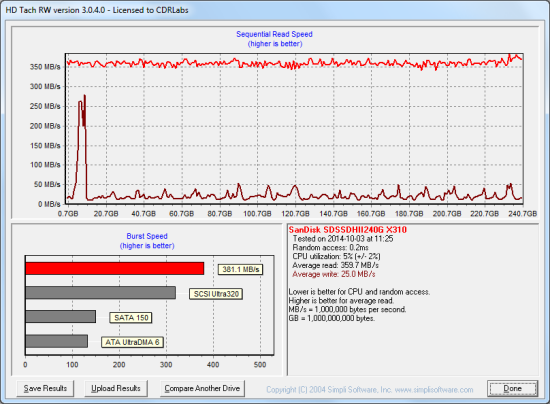
SanDisk Ultra II SSD - Dirty
To see how well the Ultra II could recover, I let the computer sit for about an hour and then reran the test. The drive's average read speed jumped back up to 434.7 MB/s. However, its write speed lagged a bit behind, averaging out at 217.7 MB/s.

SanDisk Ultra II SSD - After Trim
Lastly, I used SanDisk's SSD Dashboard utility to perform a secure erase on the Ultra II. With the drive wiped clean, its write speed jumped back up to 396.5 MB/s.

SanDisk Ultra II SSD - Secure Erase
Final Thoughts:
SanDisk's Ultra II SSD is a great choice for the consumer looking for an easy and affordable way to improve the performance of their existing desktop or notebook PC. The drive is based on TLC NAND flash technology and, depending on the capacity, is powered by either a Marvell 88SS9190 or 88SS9189 controller. The Ultra II also comes equipped with SanDisk's nCache 2.0 technology which utilizes a two-tiered caching architecture to optimize drive speed and endurance. In our sequential read and write tests, the Ultra II was able to read at speeds as high as 551 MB/s and write at speeds in excess of 474 MB/s. It also performed relatively well when doing random reads, but lagged behind the other drives in our random write tests, producing only 46,000 IOPS at low queue depths.
I do need to point out that SanDisk's nCache 2.0 technology does have its limitations. With its tiered caching architecture and On Chip Copy feature, nCache 2.0 does a great job of maintaining peak performance under normal workloads, but, once you make the transition from SLC to TLC NAND, the Ultra II's write speed drop considerably. If you use your computer primarily for web browsing, email or to play the occasional game, its unlikely that you will ever run into this situation. However, if you have a heavier workload and are doing something like video editing, which writes large amounts of data, you may want to consider other drives like the Samsung 840 EVO and Crucial MX100.
The SanDisk Ultra II is available now in 120GB, 240GB, 480GB and 960G capacities. Prices on Amazon.com and Pricegrabber currently range from $70 up to $400, with the 240GB version reviewed here going for about $110.
Highs:
- Available in 120GB, 240GB, 480GB and 960GB capacities
- Marvell 88SS9189 or 88SS9190 controller
- nCache 2.0 technology
- Excellent sequential read and write speeds under most conditions
- Good random read performance
- Performs equally well with compressible and incompressible data
- SATA 6Gb/s interface
- Large DRAM cache
- Supports TRIM, garbage collection and wear leveling
- Ultra-slim form factor
- Works with SanDisk's SSD Dashboard software
- 3 year warranty
Lows:
- Mediocre random write performance
- Does not support hardware based encryption
- Does not support DEVSLP
